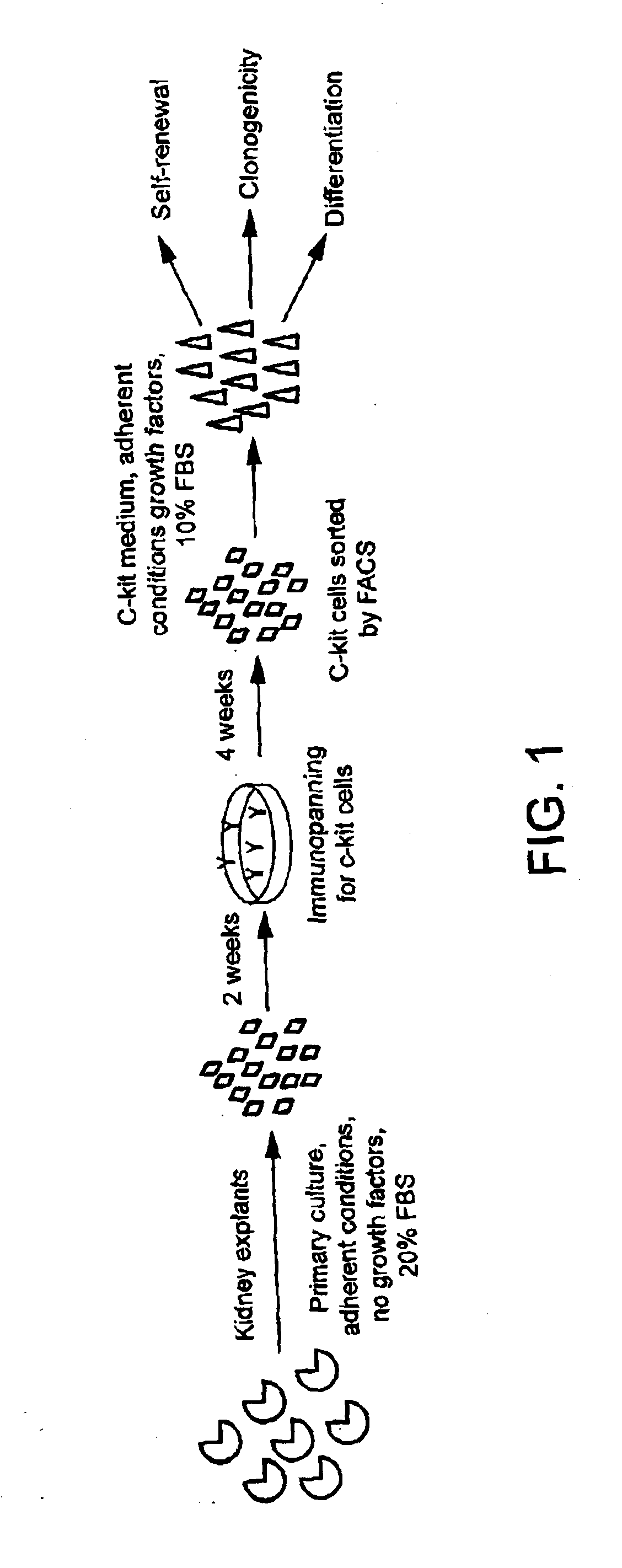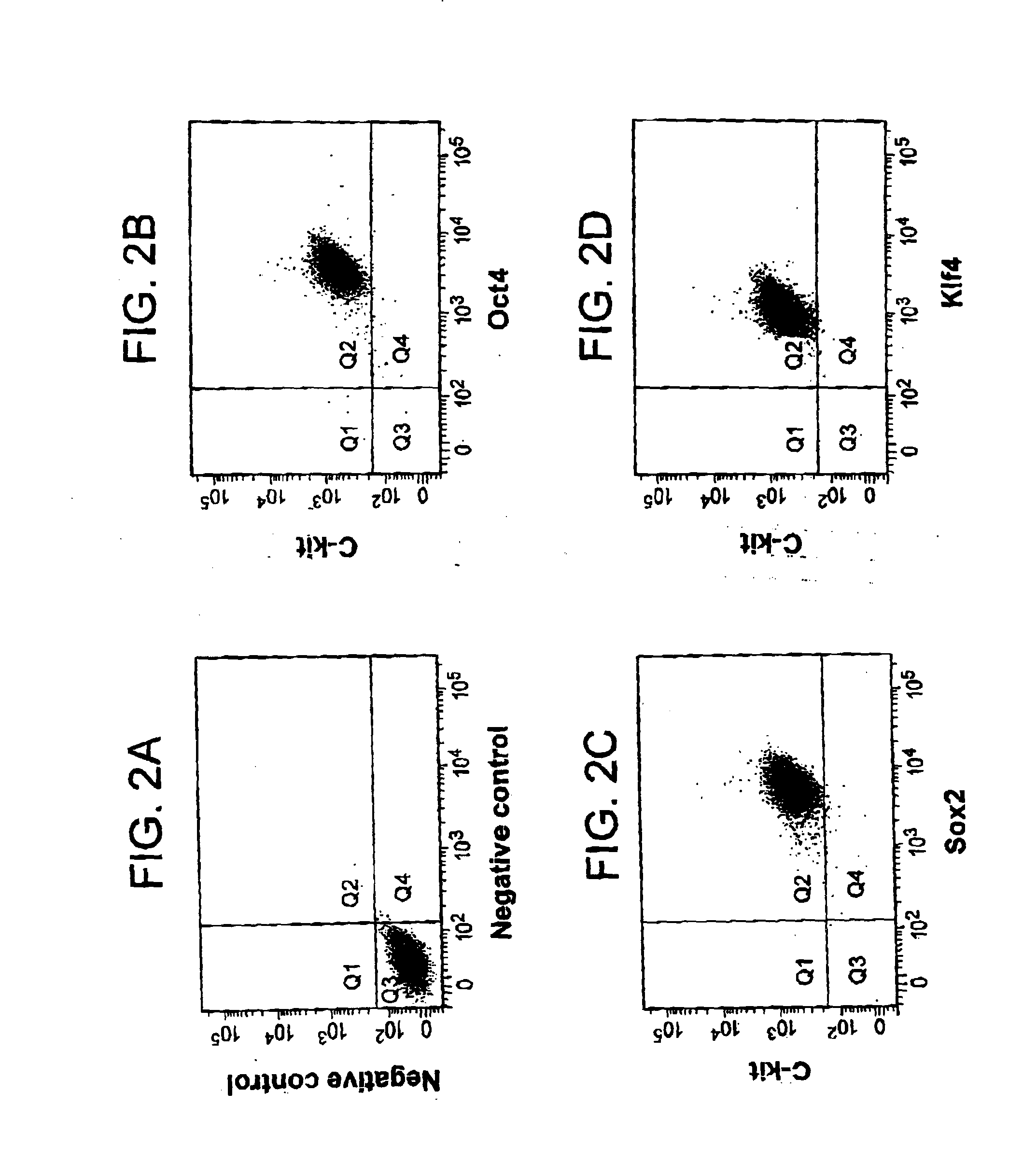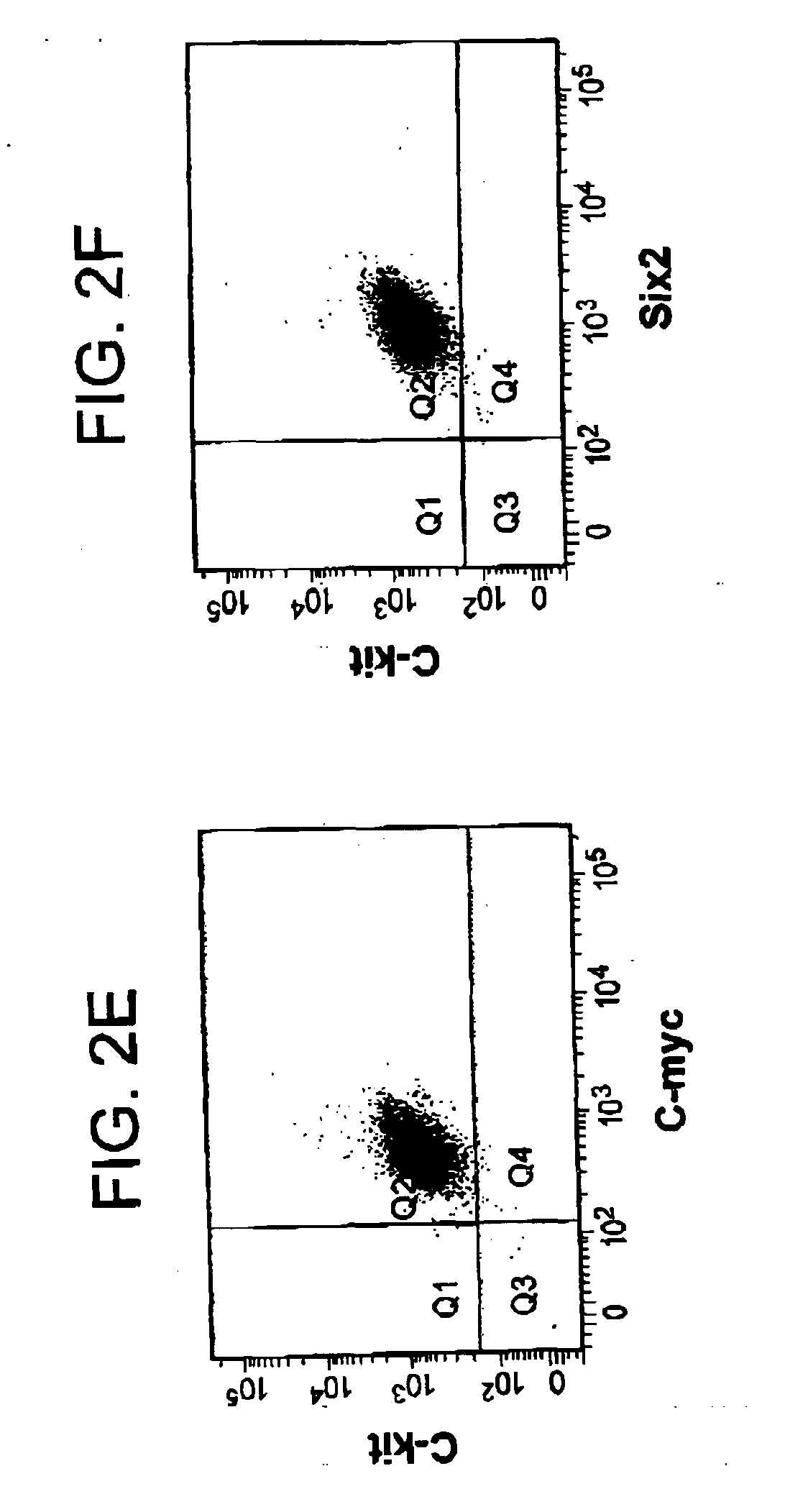Renal stem cells isolated from kidney
a kidney and stem cell technology, applied in the field of kidney stem cells, can solve the problems of reducing the possibility of tubular stem cell population
- Summary
- Abstract
- Description
- Claims
- Application Information
AI Technical Summary
Benefits of technology
Problems solved by technology
Method used
Image
Examples
example 1
[0096]c-Kit+ cells were isolated from rat kidney explants by immunopanning and further selected by depleting lineage cells (Lin−). 0.9% of positive c-Kit+ / Lin− cells were detected, which grew in monolayer on plastic and could form aggregates that detached and transitorily grew in suspension. The presence of c-Kit+ cells was demonstrated by RT-PCR and indirect immunofluorescence.
[0097]RT-PCR detected stem cell markers as well as endothelial, epithelial, mesenchymal, and neuronal markers. In addition, c-Kit+ / Lin− cells presented clonogenicity as demonstrated by two serial dilutions in 96-well plates. Three clones were cultured and expanded at least 15 passages without evidence of senescence.
[0098]Self-renewal of c-Kit+ / Lin− cells was observed by subculturing the cells until late passages. Telomerase activity was detected during different passages of c-Kit+ / Lin− cells (P11, P24, P43, P50, P52, P65 and P66), and compared to positive control and neonatal rat kidney.
[0099]Regarding the mu...
example 2
Neonatal Rat Kidney Contain c-Kit+ Stem Cells
[0103]Cells expressing the c-Kit epitope on their cell surface were widely distributed in the neonatal kidney. They were located not only in renal papilla, but also in the medulla and the nephrogenic zone. These cells expressed E-cadherin and N-cadherin. c-Kit+ cells were located primarily within a laminin-positive membrane, indicating that they are epithelial cells. In contrast, c-Kit did not co-localize with Dolichos biflorus agglutinin (DBA), a marker of ureteric bud and its derivates, or with the Na—Cl co-transporter (NCCT / SLC12A3), a distal tubule marker. But c-Kit co-localized at the apical membrane of epithelial cells of the thick ascending limb (TAL) of Henle's loop with the Na—K-2Cl co-transporter (NKCC2 / SCL12A1) in both nephrogenic cortex and medulla. Aquaporin-1 (AQP1) did not co-localize with c-Kit. c-Kit+ cells were not detected in vessels or glomeruli. Importantly, in the adult rat kidney, c-Kit+ cells exhibited identical di...
PUM
 Login to View More
Login to View More Abstract
Description
Claims
Application Information
 Login to View More
Login to View More - R&D
- Intellectual Property
- Life Sciences
- Materials
- Tech Scout
- Unparalleled Data Quality
- Higher Quality Content
- 60% Fewer Hallucinations
Browse by: Latest US Patents, China's latest patents, Technical Efficacy Thesaurus, Application Domain, Technology Topic, Popular Technical Reports.
© 2025 PatSnap. All rights reserved.Legal|Privacy policy|Modern Slavery Act Transparency Statement|Sitemap|About US| Contact US: help@patsnap.com



